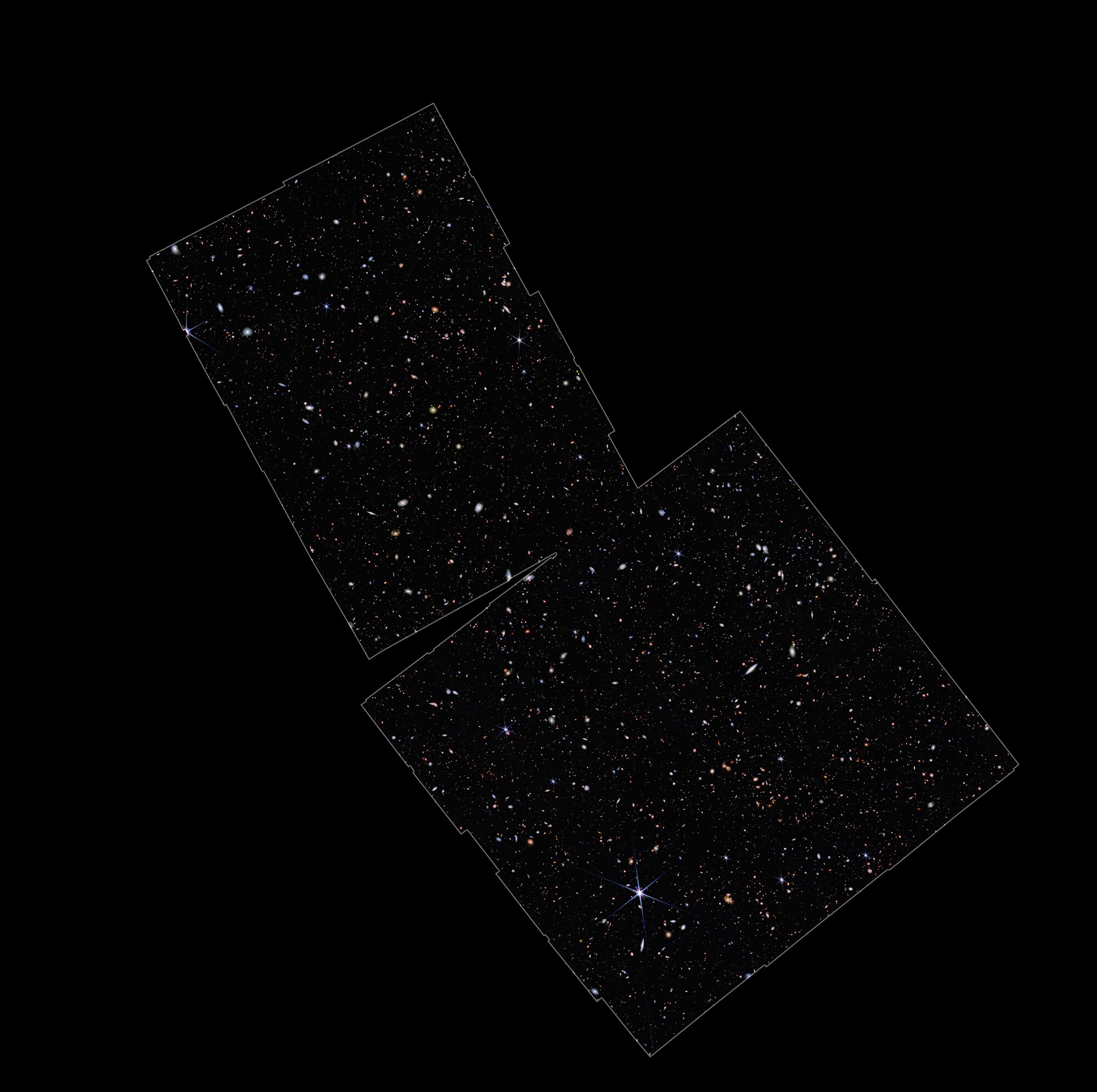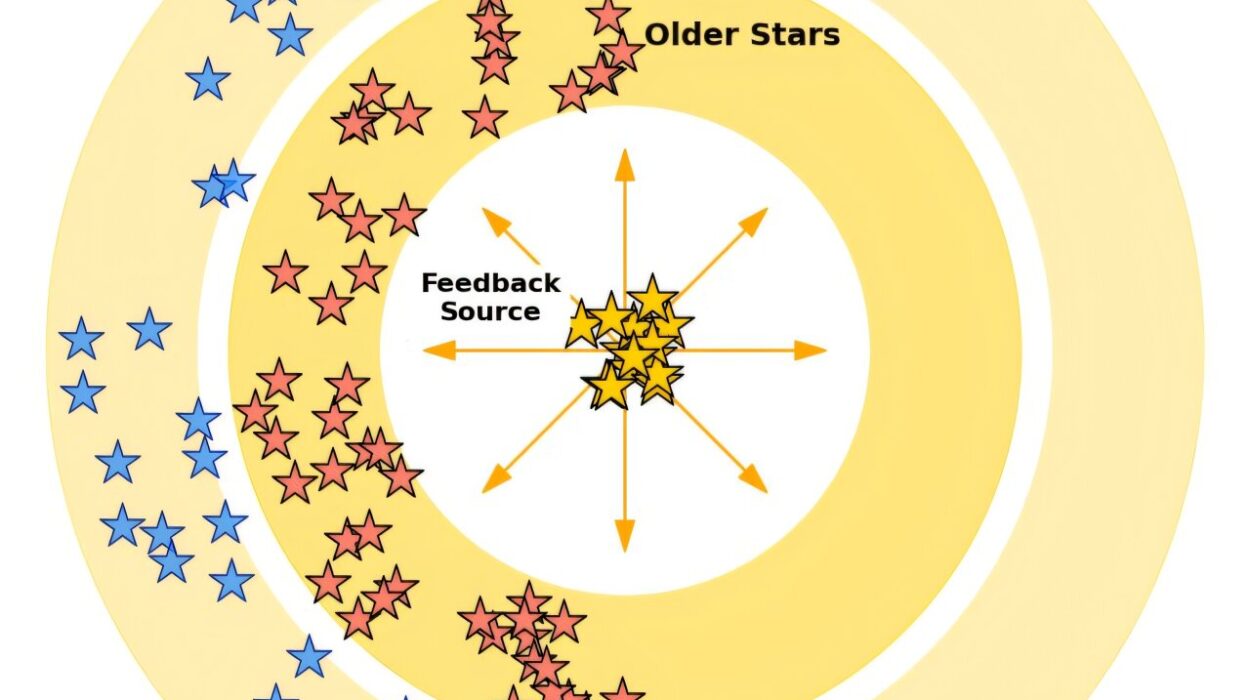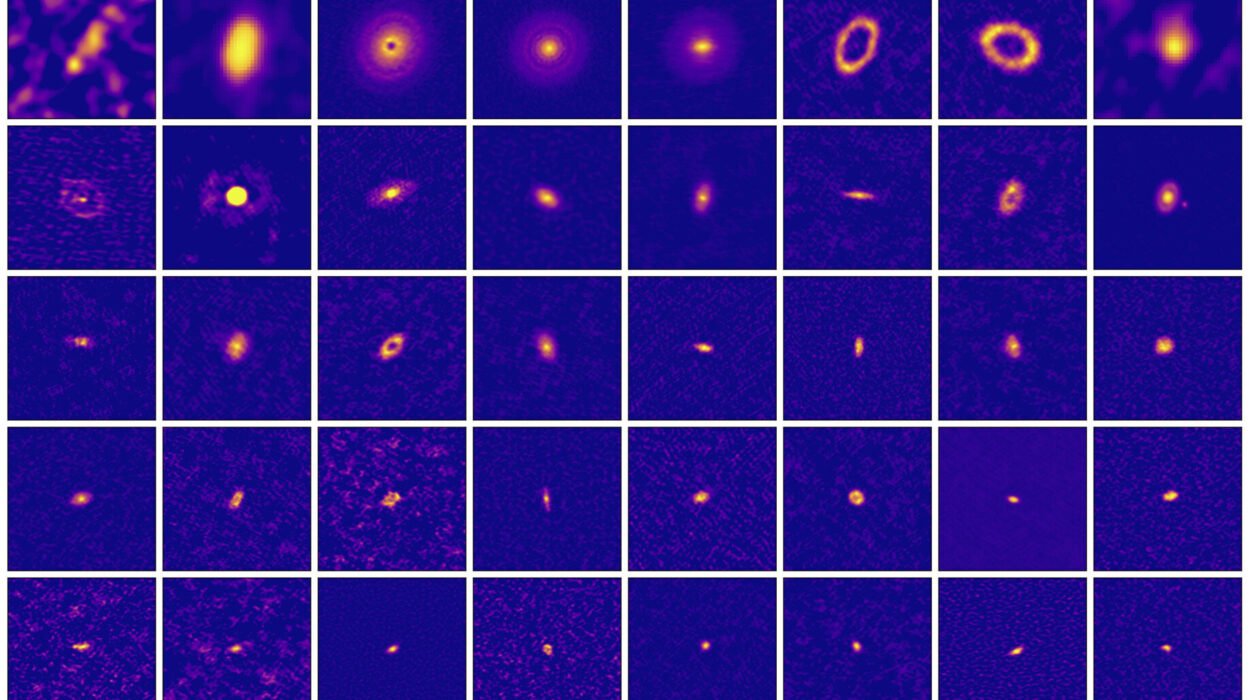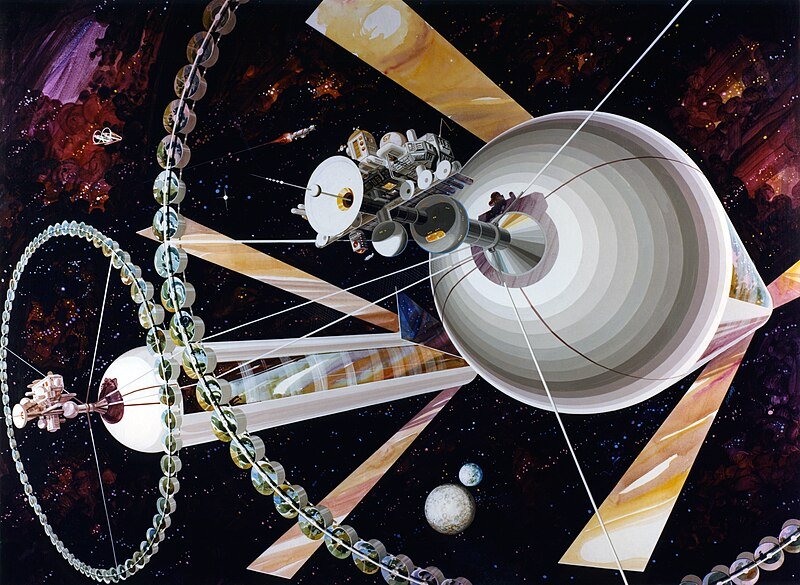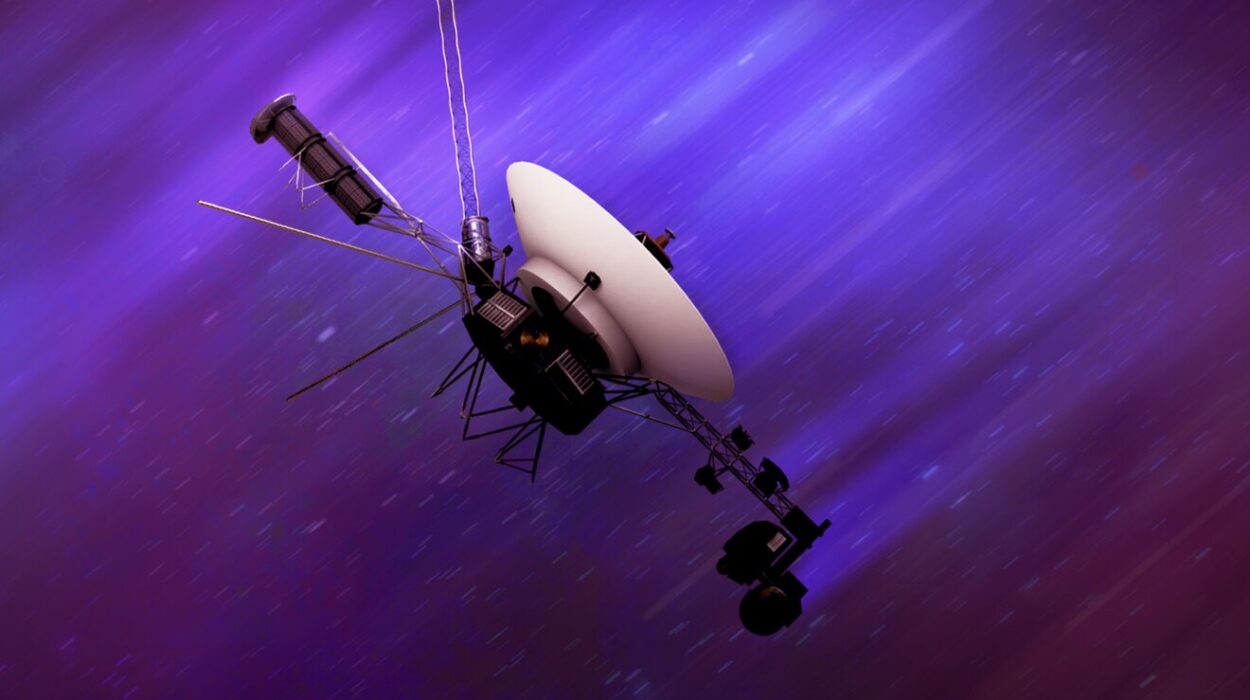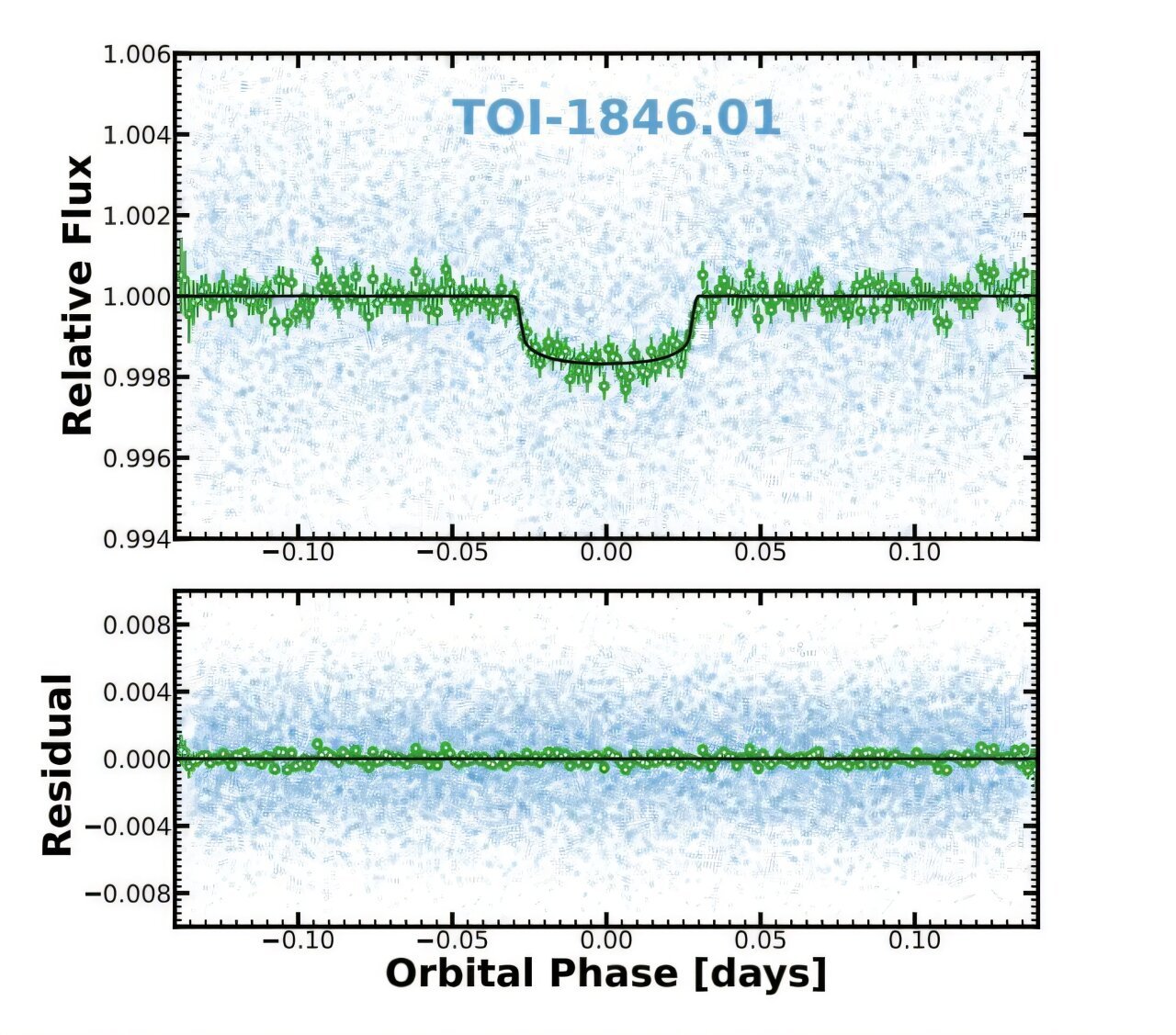The story of the universe is one of fire and silence, of light born from darkness. In the first few hundred million years after the Big Bang, the cosmos was a quiet sea of hydrogen and helium gas, drifting within expanding space. Gravity tugged at these elements, pulling them into denser clouds that would eventually ignite to form the very first stars. These ancient pioneers, often called Population III stars, lit up a universe that had until then been dark and formless.
For decades, astronomers believed that these first stars resembled the ones we see today, only hotter, larger, and more short-lived. Yet new evidence from the James Webb Space Telescope (JWST) is hinting at a stranger, more profound possibility. What if some of the earliest stars were not powered by nuclear fusion at all? What if their energy source came from something far more mysterious—dark matter?
This is the idea behind supermassive dark stars, luminous beacons not fueled by burning hydrogen but by the annihilation of dark matter particles at their cores. If confirmed, their existence would reshape our understanding of both the early universe and the very nature of matter itself.
The Birth of an Unusual Star
To understand why dark stars are so extraordinary, it helps to recall how ordinary stars work. In our sun, hydrogen atoms fuse to form helium, releasing energy that pushes outward against gravity. This balance between radiation pressure and gravity keeps the star stable for billions of years.
But in the conditions shortly after the Big Bang, something else may have been possible. Dark matter—an invisible form of matter that makes up about 25% of the universe’s mass-energy—was far more concentrated in the early universe. If dark matter is made of particles known as WIMPs (Weakly Interacting Massive Particles), then when two of these particles collide, they can annihilate, releasing energy.
Now imagine a massive cloud of hydrogen and helium collapsing under gravity in a dark matter halo. Instead of immediately igniting nuclear fusion, the cloud could be heated and supported by dark matter annihilation. This extra energy would stop the cloud from collapsing too quickly, giving rise to a puffy, luminous object: a dark star.
Unlike typical stars, dark stars could grow to extraordinary sizes, reaching millions of times the mass of the sun. And yet, despite their enormous bulk, they would be diffuse and extended, shining brightly but with surprisingly cool outer layers.
The Work of Theorists and Dreamers
The idea of dark stars was first explored in 2008, when physicists Katherine Freese, Doug Spolyar, and Paolo Gondolo published a groundbreaking paper suggesting that self-annihilating dark matter could power stars in the early universe. At first, the concept sounded speculative, almost too exotic to be real. But over time, theoretical studies revealed that not only could such stars form, they could also grow into supermassive objects capable of explaining some of astronomy’s greatest mysteries.
Among those mysteries is the origin of supermassive black holes. Observations show that colossal black holes, billions of times the mass of the sun, already existed less than a billion years after the Big Bang. Traditional star formation theories struggle to explain how they grew so quickly. But dark stars, swollen to millions of solar masses, could collapse directly into massive black holes, seeding the quasars we observe at extreme distances.
A Telescope That Changed Everything
For years, dark stars remained a fascinating idea, confined to equations and simulations. But then came JWST. With its unprecedented sensitivity and ability to peer back in time, JWST has revealed galaxies and objects so distant that their light has been traveling for over 13 billion years. And among those objects, something unexpected has appeared.
A team led by Cosmin Ilie of Colgate University, with collaborators at the University of Pennsylvania and the University of Texas at Austin, identified four of the most distant objects ever observed that may fit the profile of supermassive dark stars. These include candidates such as JADES-GS-z14-0 and JADES-GS-z11-0, located at redshifts corresponding to only a few hundred million years after the Big Bang.
Their spectra and morphology—the way their light is spread out and their shapes in JWST images—can be explained either as galaxies or as dark stars. But what caught the attention of researchers was a faint absorption feature at 1640 Angstroms in one of the candidates, a potential “smoking gun” signature of helium ions expected in dark star atmospheres.
A Clash of Interpretations
Of course, extraordinary claims demand extraordinary evidence. Every one of these distant objects could also be interpreted as a young galaxy, crowded with billions of stars. And indeed, the lines between galaxies and giant stars blur at such enormous distances, where resolution is limited and light is faint.
Yet the possibility that at least some of these are not galaxies, but single stars powered by dark matter, is thrilling. If true, it would mark the first observational evidence of dark matter influencing visible astrophysical structures in such a direct way. It would also suggest that our cosmic history is far stranger than previously imagined.
Further complicating matters, follow-up observations with the Atacama Large Millimeter/submillimeter Array (ALMA) detected oxygen in one of the same objects. Oxygen should not exist in a pristine dark star, since it forms only after multiple generations of stellar fusion. This finding hints at a more complex reality—perhaps dark stars can exist within galaxies, or merge with them, creating hybrid environments where ordinary and exotic processes mingle.
The Dark Matter Connection
At the heart of the dark star story lies the greatest unsolved puzzle in modern physics: the true nature of dark matter. Though it outweighs ordinary matter by a factor of five, dark matter has never been directly detected in the lab. It does not emit or absorb light, and it interacts only weakly with visible matter. Its presence is inferred through its gravitational effects on galaxies and cosmic structure.
If dark stars exist, they may serve as natural laboratories for studying dark matter particles. Their brightness, size, and evolution would depend on the properties of these particles—how massive they are, how often they annihilate, and how they interact. By analyzing the spectra of dark star candidates, astronomers could indirectly probe dark matter itself. In this way, dark stars represent a bridge between astrophysics and particle physics, between the vastness of space and the smallest building blocks of reality.
Why It Matters
The discovery of supermassive dark stars, if confirmed, would be a scientific revolution. It would explain puzzling JWST observations of extremely bright, compact objects that appear too massive to exist so soon after the Big Bang. It would offer a natural pathway for the creation of the first black holes, which later grew into the supermassive monsters we see at the centers of galaxies. And perhaps most profoundly, it would provide the first observable consequences of dark matter, turning an invisible mystery into a tangible player in the cosmic story.
There is also a poetic resonance to the idea. For generations, we have called dark matter “invisible” and “hidden.” Yet it may have been responsible for creating some of the brightest lights in the young universe. Dark matter, the unseen scaffolding of galaxies, may also have kindled the first cosmic dawn.
The Road Ahead
Astronomy is cautious by nature, and rightly so. The data we now have is tantalizing but not definitive. Confirming dark stars will require more detailed spectra, higher signal-to-noise measurements, and additional observations across multiple instruments. As JWST continues its mission, and as future telescopes like the Extremely Large Telescope and the Nancy Grace Roman Space Telescope come online, the case for or against dark stars will sharpen.
Regardless of the outcome, this research has already expanded our imagination of what stars can be. It has shown that the early universe may have been populated by objects utterly unlike anything in our local cosmic neighborhood. And it has reminded us that even after centuries of astronomy, the sky still holds surprises waiting to be uncovered.
A New Chapter in the Cosmic Story
When we look up at the night sky, we see stars burning with fusion, galaxies glittering with billions of suns, and planets orbiting in silent harmony. But behind that beauty is a deeper truth: the universe is always more complex, more inventive, more mysterious than we expect.
The idea that the first stars might have been fueled not by ordinary fusion but by dark matter annihilation is both scientifically daring and emotionally profound. It ties together some of our biggest questions—What is dark matter? How did the first black holes form? What lit up the universe after the Big Bang?—into a single thread of cosmic inquiry.
Whether or not supermassive dark stars truly exist, the search for them embodies the essence of physics and astronomy: curiosity, creativity, and the courage to imagine. Perhaps one day, we will know with certainty whether the universe’s first beacons were born from ordinary fire—or from the darkness itself.
More information: Cosmin Ilie et al, Spectroscopic Supermassive Dark Star candidates, Proceedings of the National Academy of Sciences (2025). DOI: 10.1073/pnas.2513193122
